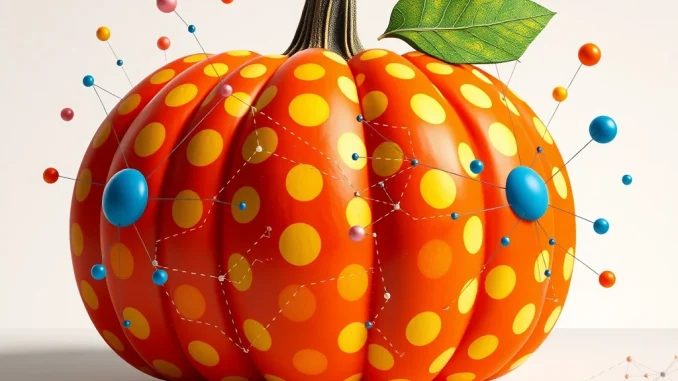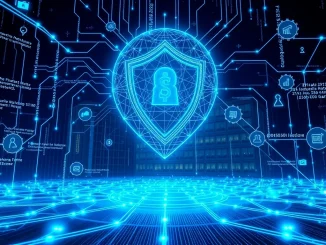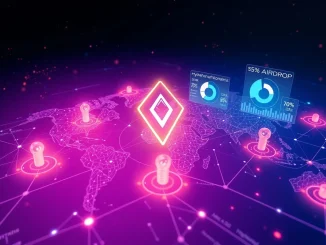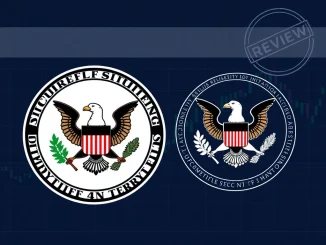
The world of traditional art is increasingly intersecting with the cutting edge of Web3 technology. In an exciting development for collectors and enthusiasts alike, iconic artist Yayoi Kusama is making a significant return to the blockchain space. Her celebrated 1990 work, “Pumpkin (2),” is set to be released as unique digital art shards, marking another milestone in the evolution of art ownership and accessibility.
DuckChain Brings ‘Pumpkin (2)’ to Blockchain Art
Leading this innovative project is DuckChain, an AI-powered blockchain initiative known for its Telegram integration. They announced their plans on X (formerly Twitter) to transform Kusama’s famous sculpture into a series of on-chain digital assets. This move is facilitated by a collaboration with LiveArt, a platform specializing in bringing high-value art into the digital realm. The ability to own a piece of a master’s work like Kusama’s, fractionalized and secured on the blockchain, represents a powerful shift.
The artwork, “Pumpkin (2),” is instantly recognizable with its bold yellow hue and signature black polka dots. Bringing such a culturally significant piece onto the blockchain opens up new possibilities for interaction and collection, allowing a broader audience to engage with Kusama’s legacy.
What Does ‘On-Chain Art Shard’ Mean?
The concept of an ‘on-chain art shard’ is key here. Instead of creating a single, indivisible Non-Fungible Token (NFT), the artwork is likely being fractionalized into many smaller tokens. These tokens represent a piece or share of the whole digital representation of the artwork. ‘On-chain’ signifies that the core data or at least critical metadata and the ownership records are stored directly on the blockchain, offering transparency and immutability.
Here’s a breakdown of the key elements:
- Artwork: Yayoi Kusama’s “Pumpkin (2)” (1990)
- Platform Lead: DuckChain (Telegram-based AI blockchain project)
- Web3 Partner: LiveArt (Facilitating the digital transformation)
- Format: Digital Art Shards (Fractionalized ownership)
- Blockchain Type: DuckChain’s network
- Minting Token: DUCK tokens (DuckChain’s native currency)
Why is This Development Significant for Digital Art?
The entry of globally renowned artists like Yayoi Kusama into the blockchain space lends significant credibility to the burgeoning world of digital art. It signals that Web3 is not just a fleeting trend but a serious medium for artistic expression, collection, and value transfer. This initiative provides a blueprint for how traditional masterpieces can be tokenized and shared with a global community, overcoming geographical barriers and potentially lowering entry costs for collectors through fractionalization.
The use of DUCK tokens for minting also integrates this art drop directly into the DuckChain ecosystem, adding utility to their native token and encouraging participation within their community.
Exploring the Potential of Blockchain Art
Putting art on the blockchain offers several compelling advantages:
- Verifiable Provenance: The history of ownership is immutably recorded on the ledger.
- Increased Accessibility: Fractionalization allows more people to own a piece of high-value art.
- Global Market: Art can be traded easily on marketplaces worldwide, 24/7.
- Creator Royalties: Smart contracts can ensure artists receive royalties on future sales.
While exciting, the space also presents challenges, including market volatility, understanding the technology, and ensuring the longevity of digital assets. However, projects like this one demonstrate ongoing efforts to mature the market and make it more accessible.
What’s Next for On-Chain Art and Kusama?
This drop represents Kusama’s latest foray into Web3, building on previous NFT initiatives. It highlights a growing trend of established artists experimenting with blockchain technology. The decision to use on-chain art shards via DuckChain and LiveArt is a specific technical choice that emphasizes security and transparency by embedding key data directly onto the chain.
As the release date approaches, anticipation within both the art and crypto communities is building. This project serves as a fascinating case study on the intersection of art, technology, and community-driven platforms like DuckChain.
Summary: A Masterpiece Meets the Future
The announcement that Yayoi Kusama’s iconic “Pumpkin (2)” will be released as on-chain art shards by DuckChain and LiveArt is a landmark moment. It underscores the increasing integration of traditional art into the digital realm, powered by blockchain technology. This initiative not only makes a piece of art history accessible in a new format but also highlights the potential of fractionalized digital art and the evolving utility of platform-specific tokens like DUCK. It’s a vibrant step forward for the entire blockchain art ecosystem.



